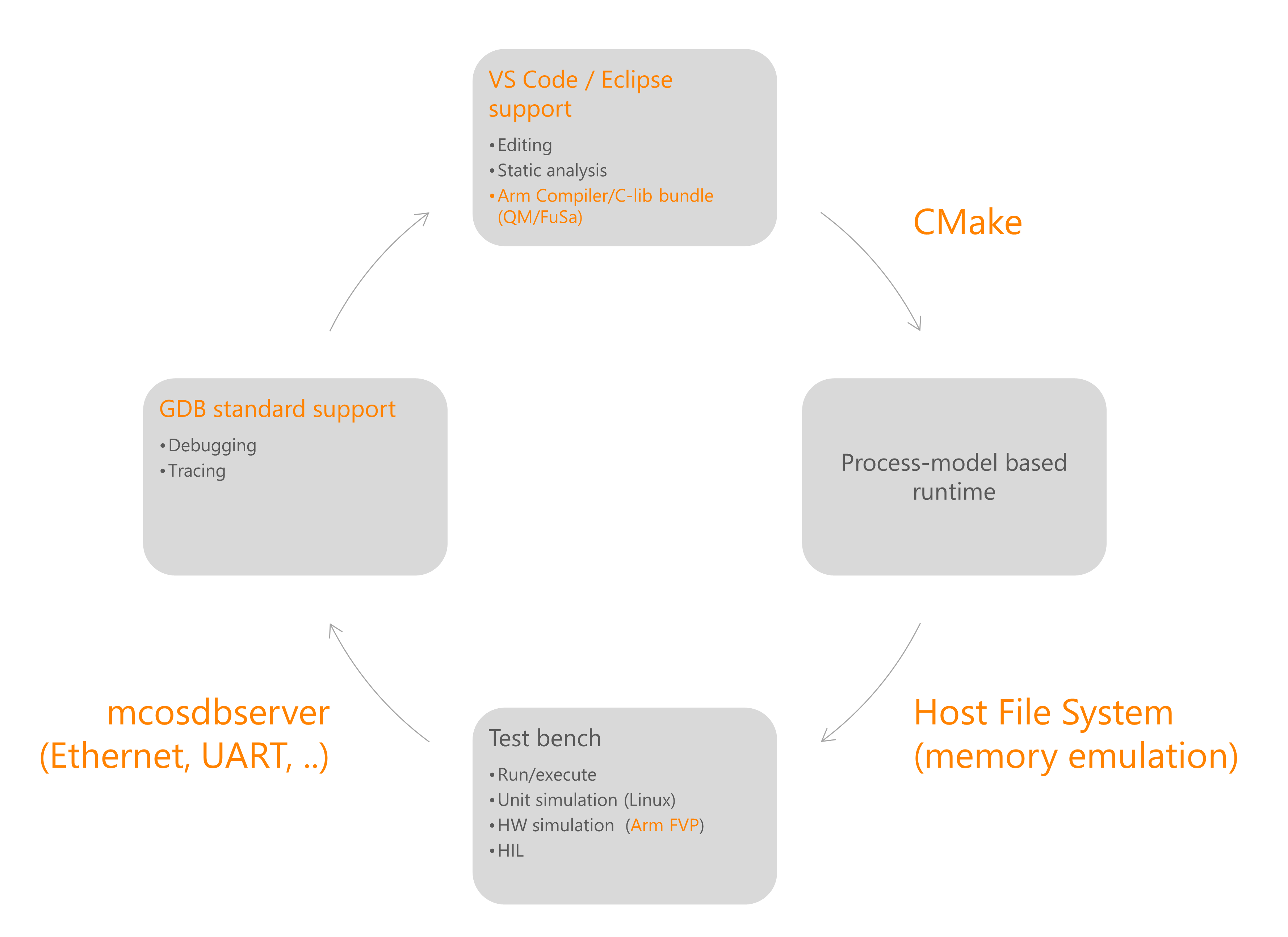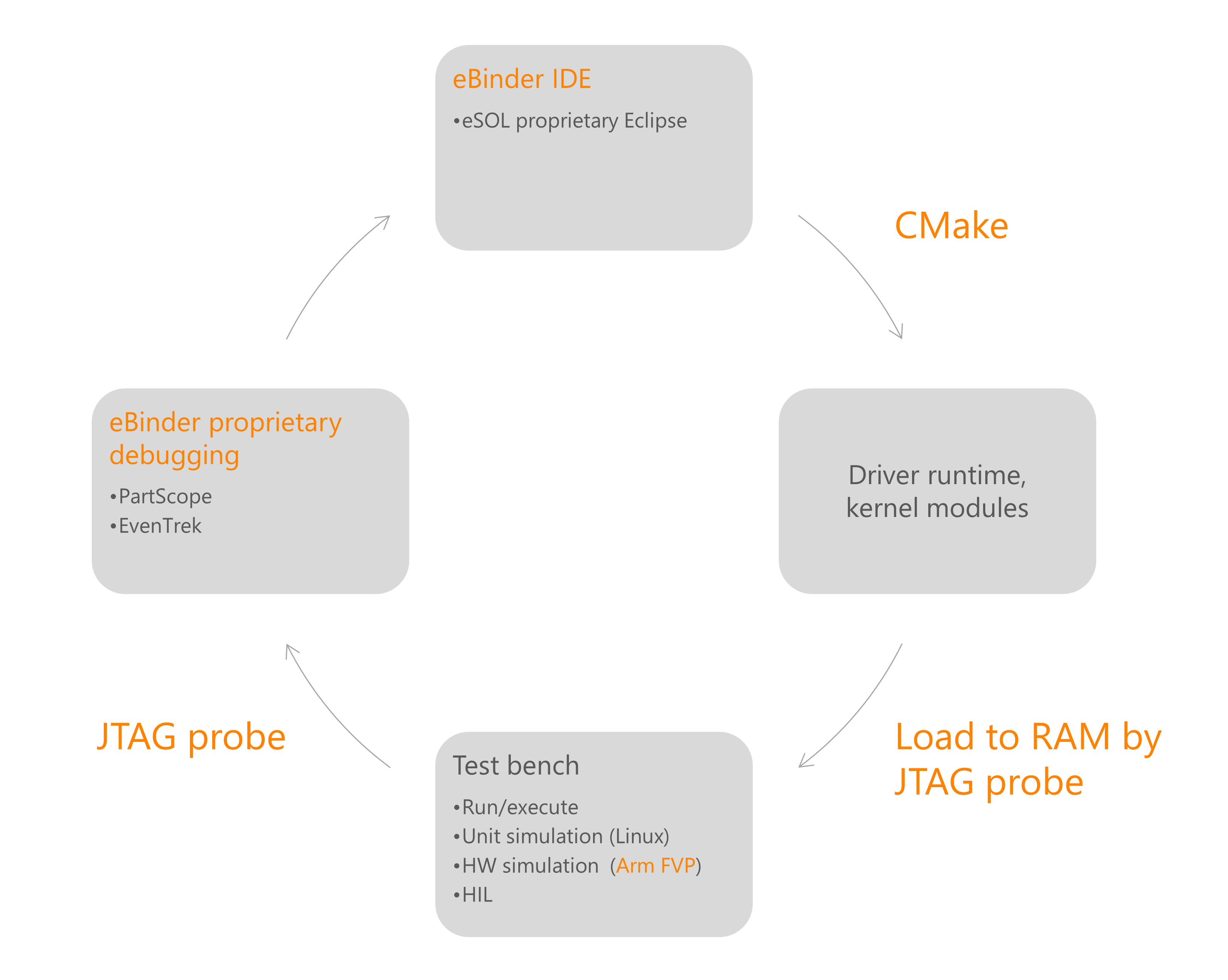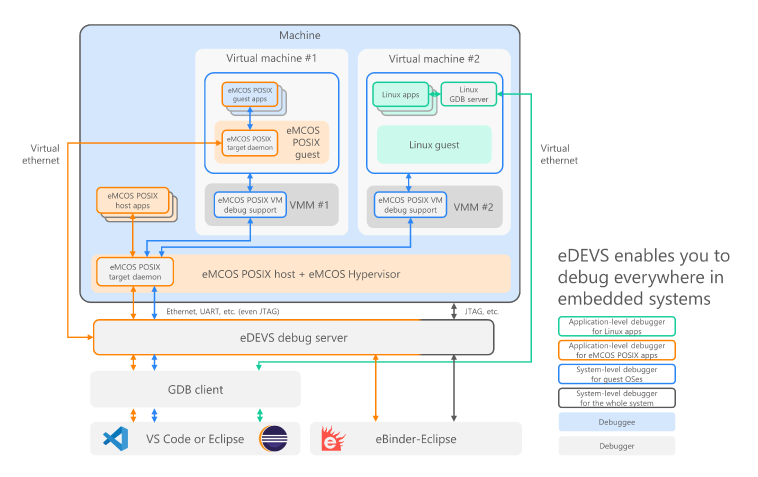eDEVS® detail content
1. eDEVS Overview
2. eDEVS for Arm bundle
3. Three development phases with eDEVS
-Application development with eDEVS
-Pre-hardware or first-hardware development support with eDEVS
-Target development with eDEVS
4. eDEVS System Requirements
1. Application development with eDEVS
Developers start, e.g., with the VS Code Editor and can debug first unit tests down to eMCOS® RTOS' thread level.

2. Pre-hardware or first-hardware development support with eDEVS
As a certified Arm partner for pre-target hardware development support, we also offer a bundle with Arm's original FVP Simulator. This way, the first hardware-related drivers or configurations can be developed even before new chips are available. With VS Code, system debugging can then already be performed. In addition, the FVP Simulator helps to parallelize extensive tests in CI/CD pipelines to reduce cycle times rapidly. Contact us if you need an FVP of your planned Arm CPU hardware. eSOL offers a service to provide the desired startup components as early as possible in a virtual BSP.
In addition to the simulation of the chip hardware support eDEVS also provides a fast development start if there is no hardware memory support yet, but hardware-related software is to be written. With our host file system (HFS), SW modules can already access emulated memory before it is available on the hardware or the corresponding SW drivers are available. So your function development is not slowed down by this.
3. Target development with eDEVS
Final target development is enabled by the eMCOS target daemon, which is based on the established GDB standard.

For eDEVS we have a pre-integration with Visual Studio Code or Eclipse.

Target debugging with JTAG
The following needs can be met by linking eDEVS with a JTAG probe with the target hardware:- Using eDEVS functions to develop your system on hardware that does not (yet) support a communication interface (e.g. serial, Ethernet, etc.)
- Modifying program code in flash memory
- Breaking the entire system and using functions specific to JTAG
Learn more
Back to top

